Crafting a Compelling Cover Letter
A cover letter is your first opportunity to make a positive impression on a potential employer. It’s more than just a formality it is a critical tool for showcasing your personality, skills, and enthusiasm for a specific role. A well-crafted cover letter complements your resume and provides context, allowing you to connect your experiences to the job’s requirements. It’s your chance to go beyond a list of qualifications and present yourself as the ideal candidate, making a strong case for why you should be interviewed. Think of it as your personal introduction, your elevator pitch, and your marketing brochure all rolled into one.
Understanding the Purpose of a Cover Letter
The primary purpose of a cover letter is to introduce you and your qualifications to a potential employer and persuade them to read your resume. It allows you to express your interest in the position, demonstrate your knowledge of the company, and highlight relevant skills and experiences. A good cover letter personalizes your application, showing that you’ve taken the time to understand the job and the company’s needs. It is a way to showcase your communication skills and enthusiasm, setting you apart from other applicants who may only submit a resume.
Highlighting Your Key Skills and Experiences
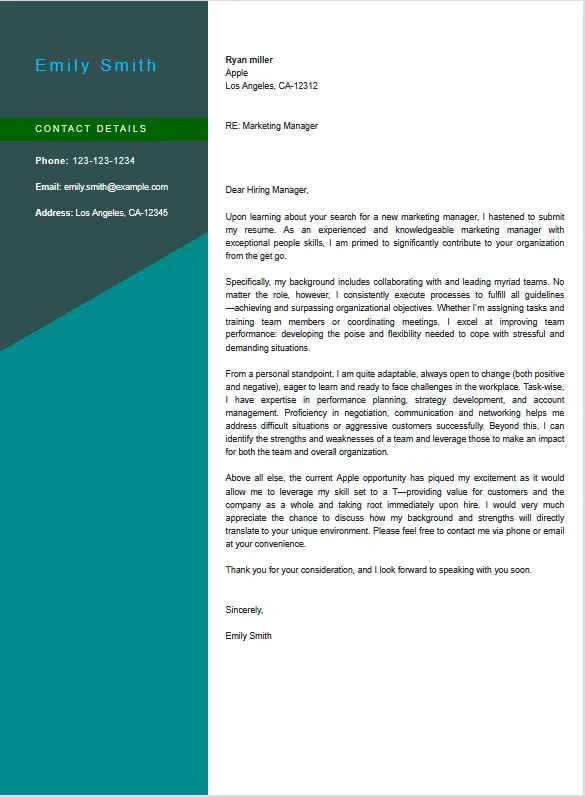
Your cover letter is where you connect your skills and experience to the specific requirements of the job. Carefully review the job description and identify the key skills and experiences the employer is seeking. Then, choose a few specific examples from your background that directly demonstrate your ability to meet those requirements. Quantify your accomplishments whenever possible using numbers or data to showcase the impact you’ve made in previous roles. For instance, instead of saying ‘Managed social media,’ you could say ‘Increased social media engagement by 30% in six months.’ This shows your achievements in a clear and compelling way, proving you can deliver results.
Researching the Company
Before you even start writing your cover letter, conduct thorough research on the company. Visit their website, explore their social media profiles, and read news articles about them. Understanding their mission, values, and recent projects helps you tailor your letter to their specific needs and demonstrate your genuine interest. Mention specific company initiatives, projects, or values that resonate with you. This will show the hiring manager that you’ve done your homework and that you’re genuinely interested in joining their team. This level of research also allows you to use relevant keywords and phrases from their company culture, making you sound like a great fit from the get-go.
Formatting Your Cover Letter
Proper formatting is essential for making your cover letter easy to read and visually appealing. Use a professional font, such as Times New Roman, Arial, or Calibri, in a standard size (11 or 12 points). Keep your margins at 1 inch on all sides. Structure your letter with clear sections, including an introduction, body paragraphs, and a conclusion. Break up long blocks of text into shorter paragraphs to make it more reader-friendly. Ensure your cover letter is well-organized, with a clear flow of ideas and a consistent tone. Avoid any formatting errors, like inconsistent spacing or alignment issues. Before submitting, always proofread the document to ensure it’s professional and error-free. A polished cover letter shows you take your job search seriously.
Essential Cover Letter Elements
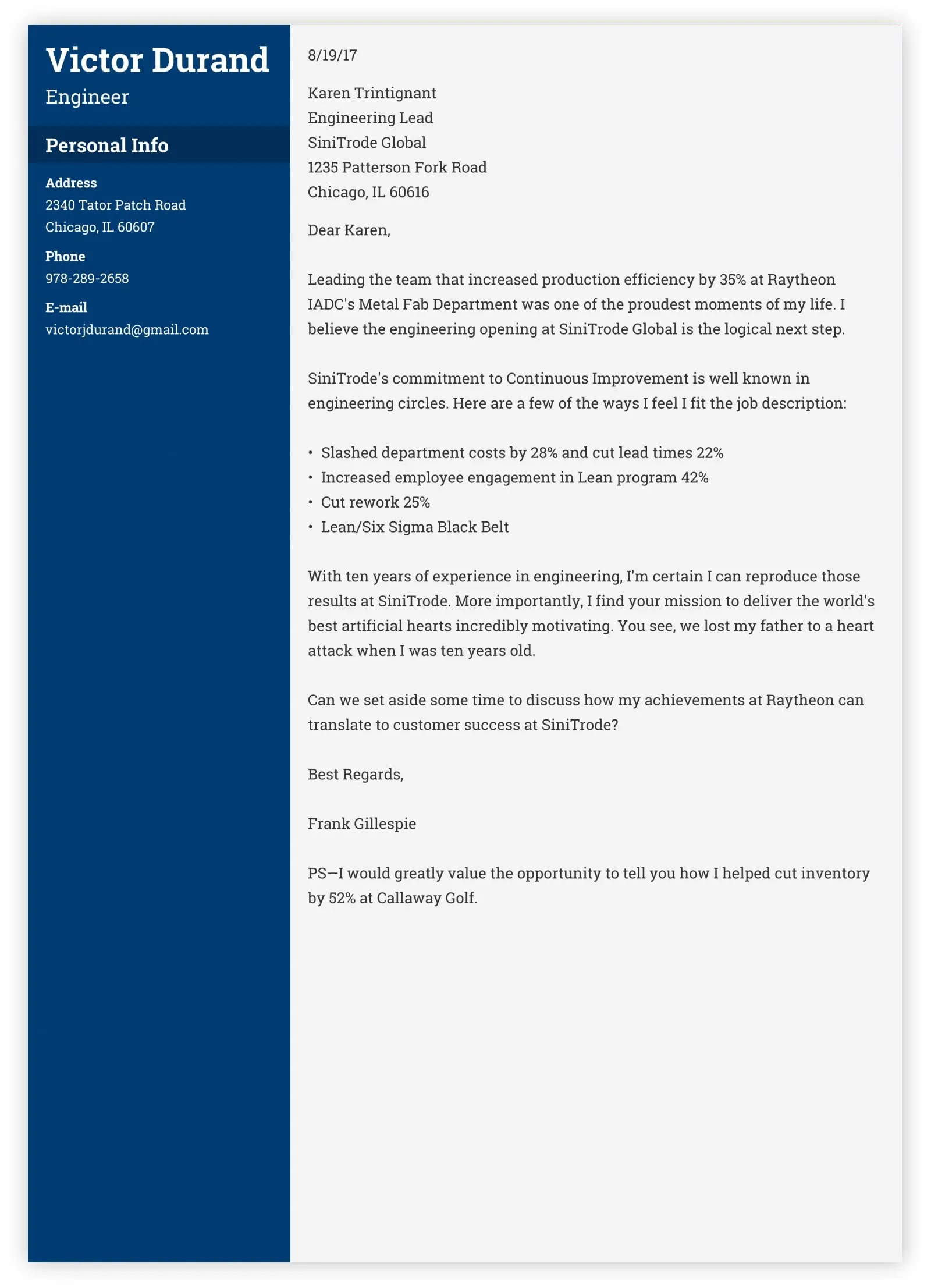
Your Contact Information
At the top of your cover letter, include your full name, address, phone number, and professional email address. Make sure your email address is appropriate and professional. It’s also a good idea to include a link to your LinkedIn profile or online portfolio if you have one. Ensure this information is accurate and up-to-date, as it’s how the recruiter will contact you. Ensure that your contact information is clearly visible and easy to find. It is also helpful to put the date you are sending the letter below your contact info.
The Salutation
Address your cover letter to a specific person whenever possible. If you can find the hiring manager’s name, use ‘Dear Mr./Ms./Mx. [Last Name]’. This shows you’ve done your research and adds a personal touch. If you can’t find a specific name, use a professional salutation like ‘Dear Hiring Manager’ or ‘Dear [Company Name] Team.’ Avoid generic greetings such as ‘To Whom It May Concern,’ as they can make your letter seem impersonal. Ensure you spell the name correctly and use the correct title to demonstrate your attention to detail and respect for the recipient.
Opening Paragraph Captivate Readers
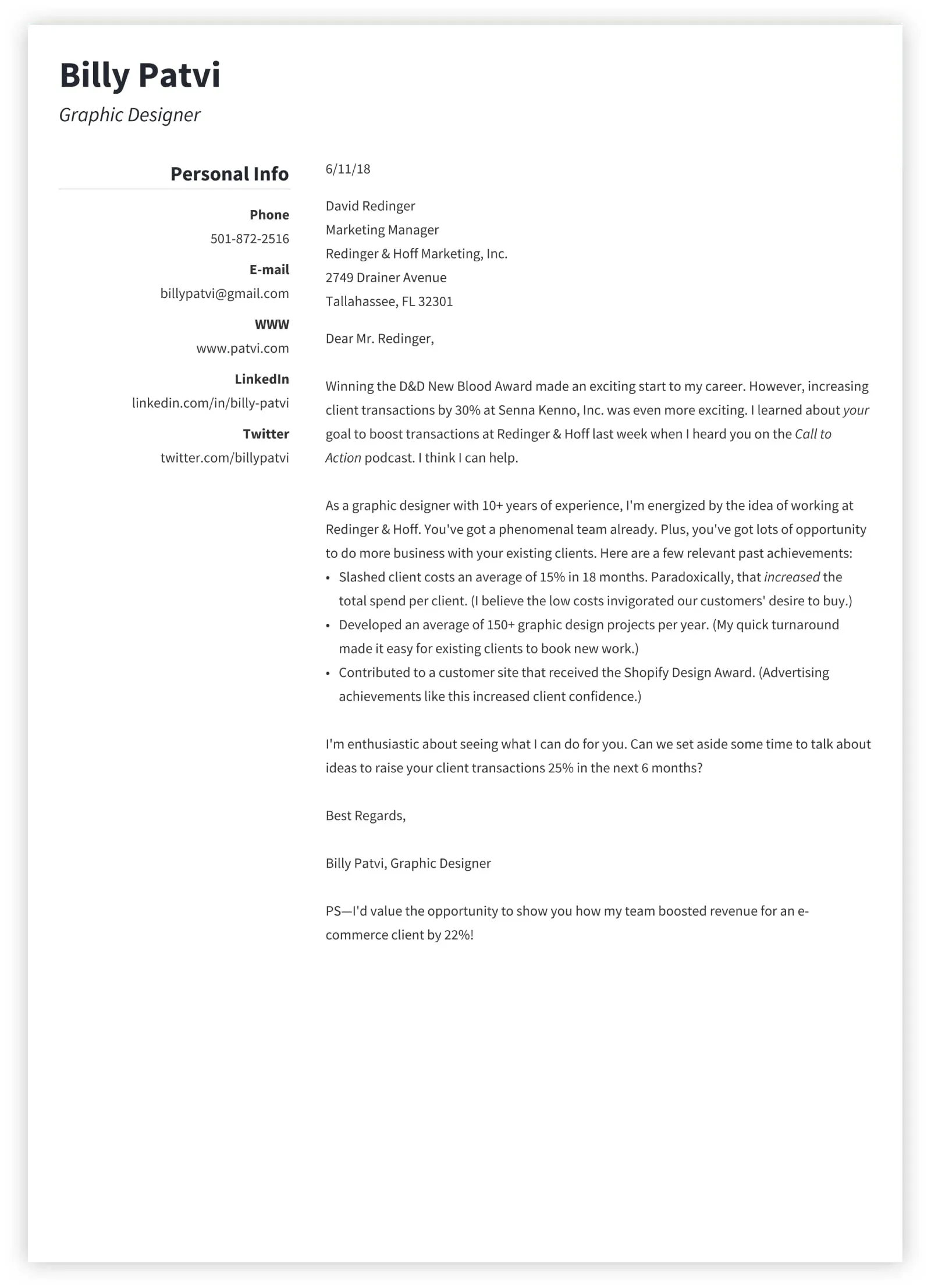
Your opening paragraph is your hook – it should grab the reader’s attention and make them want to read more. Start by expressing your enthusiasm for the position and the company. Briefly state where you saw the job posting and why you’re excited about the opportunity. Clearly state the specific position you are applying for to avoid confusion. Summarize your key qualifications or a compelling achievement that aligns with the job requirements. This opening should quickly convince the hiring manager to continue reading your letter and review your qualifications in detail.
Body Paragraphs Sell Yourself
The body paragraphs are where you elaborate on your skills, experience, and accomplishments. Use these paragraphs to demonstrate how your qualifications align with the job requirements. Provide specific examples of your accomplishments and quantify your results whenever possible. Use the STAR method (Situation, Task, Action, Result) to structure your responses and provide context. Highlight the skills and experiences mentioned in the job description. Show how you’ve applied your skills to achieve positive outcomes. This section needs to focus on what you have to offer and why you are the best fit for the role.
Closing Paragraph Call to Action
Your closing paragraph should reiterate your interest in the position and express your desire for an interview. Thank the hiring manager for their time and consideration. Reiterate your value and offer a clear call to action, such as ‘I am eager to discuss how my skills can benefit your team.’ Include your contact information again in the closing. End with a professional closing, such as ‘Sincerely,’ ‘Best regards,’ or ‘Thank you,’ followed by your full name. Keep the closing concise, professional, and leaves a positive lasting impression.
Polishing Your Cover Letter
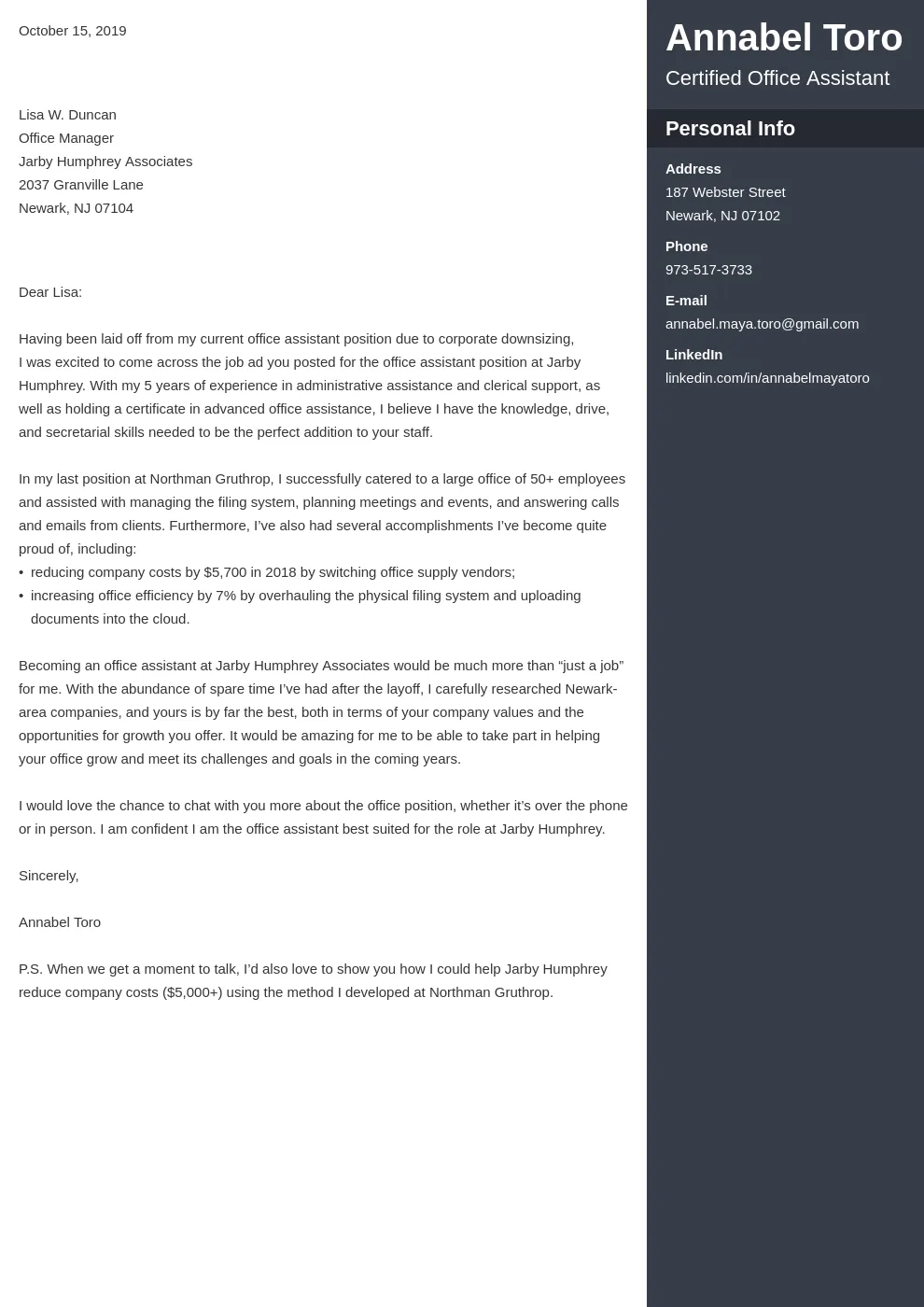
Proofreading for Errors
Proofreading is a critical step in ensuring your cover letter is professional and error-free. Carefully review your letter for any grammatical errors, spelling mistakes, punctuation issues, and typos. Read your cover letter multiple times, and consider reading it aloud to catch any awkward phrasing or sentences. Use a spell checker and grammar checker, but don’t rely on them entirely; they may miss errors. Ask a friend, family member, or career advisor to proofread your cover letter as well. A fresh set of eyes can often spot mistakes that you might overlook. A polished cover letter shows you take the application process seriously.
Tailoring to Each Job
Avoid using a generic cover letter for every job application. Take the time to customize your cover letter for each position you apply for. Review the job description carefully and highlight the skills and experiences that are most relevant. Research the company and tailor your letter to their specific needs and values. Personalize your letter by mentioning specific projects, initiatives, or company values that resonate with you. Mention the specific job title and company in the letter. Customizing your cover letter demonstrates your genuine interest in the role and increases your chances of getting noticed.
Using Strong Action Verbs
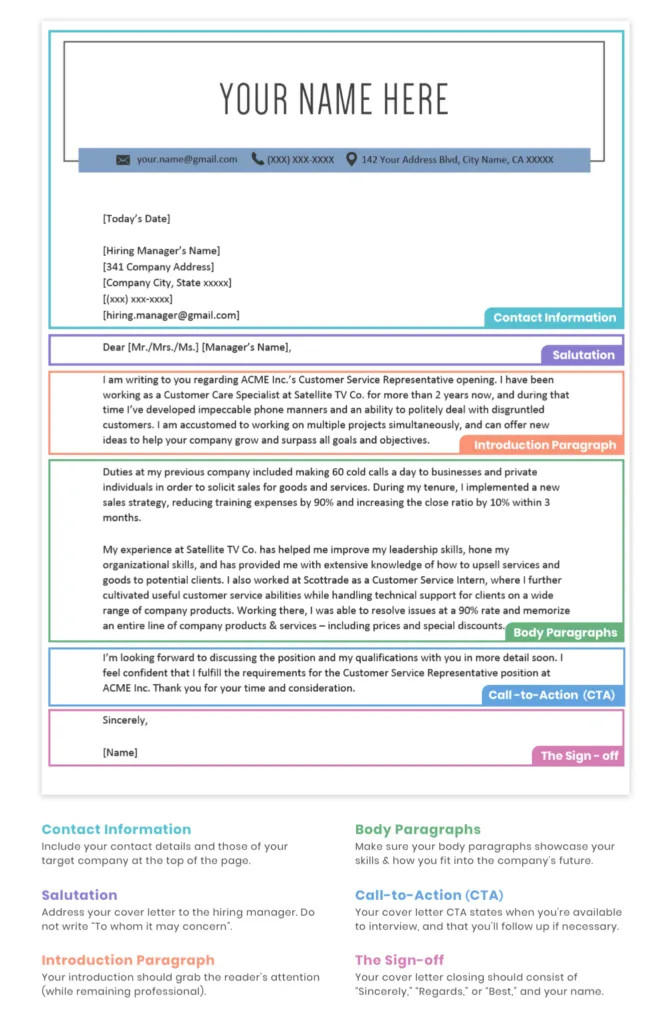
Use strong action verbs to describe your accomplishments and responsibilities. Action verbs make your cover letter more dynamic and engaging, and they showcase your skills and abilities. Start your bullet points and sentences with action verbs like ‘Managed,’ ‘Developed,’ ‘Implemented,’ ‘Led,’ ‘Achieved,’ ‘Improved,’ or ‘Created.’ This helps to showcase your accomplishments and results in a clear and impactful way. Avoid using weak verbs like ‘Helped’ or ‘Assisted.’ Choose action verbs that accurately reflect your role and accomplishments. Make your letter memorable by using powerful words.
Cover Letter Examples for Inspiration
Cover Letter Examples for Various Industries
Review cover letter examples for your specific industry to get an idea of the typical structure and content. Examples can offer a sense of how to tailor your cover letter to the industry’s nuances. Search online for cover letter templates and examples. However, customize these templates to reflect your unique skills and experiences. Adapting examples to your field can help you showcase your understanding of industry-specific terminology and expectations. Consider the tone and style of the example and adjust it to match your personality and the company culture.
Cover Letter Examples for Different Experience Levels
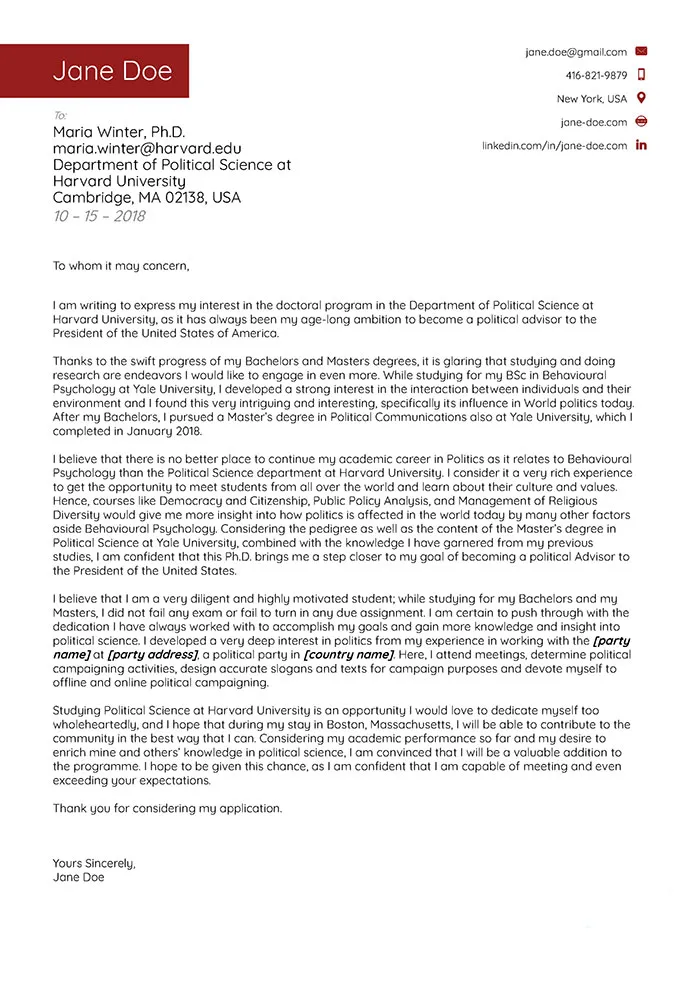
Cover letter examples can vary depending on your experience level. A recent graduate might focus on internships, projects, and relevant coursework, while a seasoned professional might highlight years of experience and leadership roles. Tailor your content and examples to your professional background. Review examples relevant to your stage of career. When you are starting out, you may use more examples of projects or coursework. For those with more experience, there may be more emphasis on responsibilities and accomplishments. Use the examples to tailor your content to your specific career stage.
Cover Letter Dos and Don’ts
Things to Do
Do tailor your letter to each job, demonstrating a clear understanding of the role and the company. Do highlight your key skills and experiences, providing specific examples and quantifying your achievements. Do proofread carefully for any errors in grammar, spelling, or punctuation. Do research the company and address your letter to a specific person whenever possible. Use strong action verbs to make your letter more engaging and dynamic. Keep your tone professional, enthusiastic, and concise, making sure you stay within the recommended one-page limit. This ensures you present yourself in the best possible light.
Things to Avoid
Avoid generic cover letters that are not tailored to the specific job or company. Avoid grammatical errors, spelling mistakes, and typos, as they can create a negative impression. Do not use jargon or overly complex language that might confuse the hiring manager. Avoid exaggerating or misrepresenting your skills or experience, as this can lead to serious consequences. Do not include irrelevant information that does not pertain to the job requirements. Avoid being negative or complaining about previous employers or experiences. Keep your letter focused, positive, and professional.
Maximizing Your Cover Letter’s Impact
By following these secrets, you can significantly improve your cover letter and increase your chances of making a positive impression on potential employers. Remember to personalize your cover letter for each job, highlight your most relevant skills, and always proofread carefully for errors. A well-crafted cover letter shows you are serious about the job and helps you stand out from the competition. Take the time to create a cover letter that represents you and showcases your best qualities to land that dream job.
